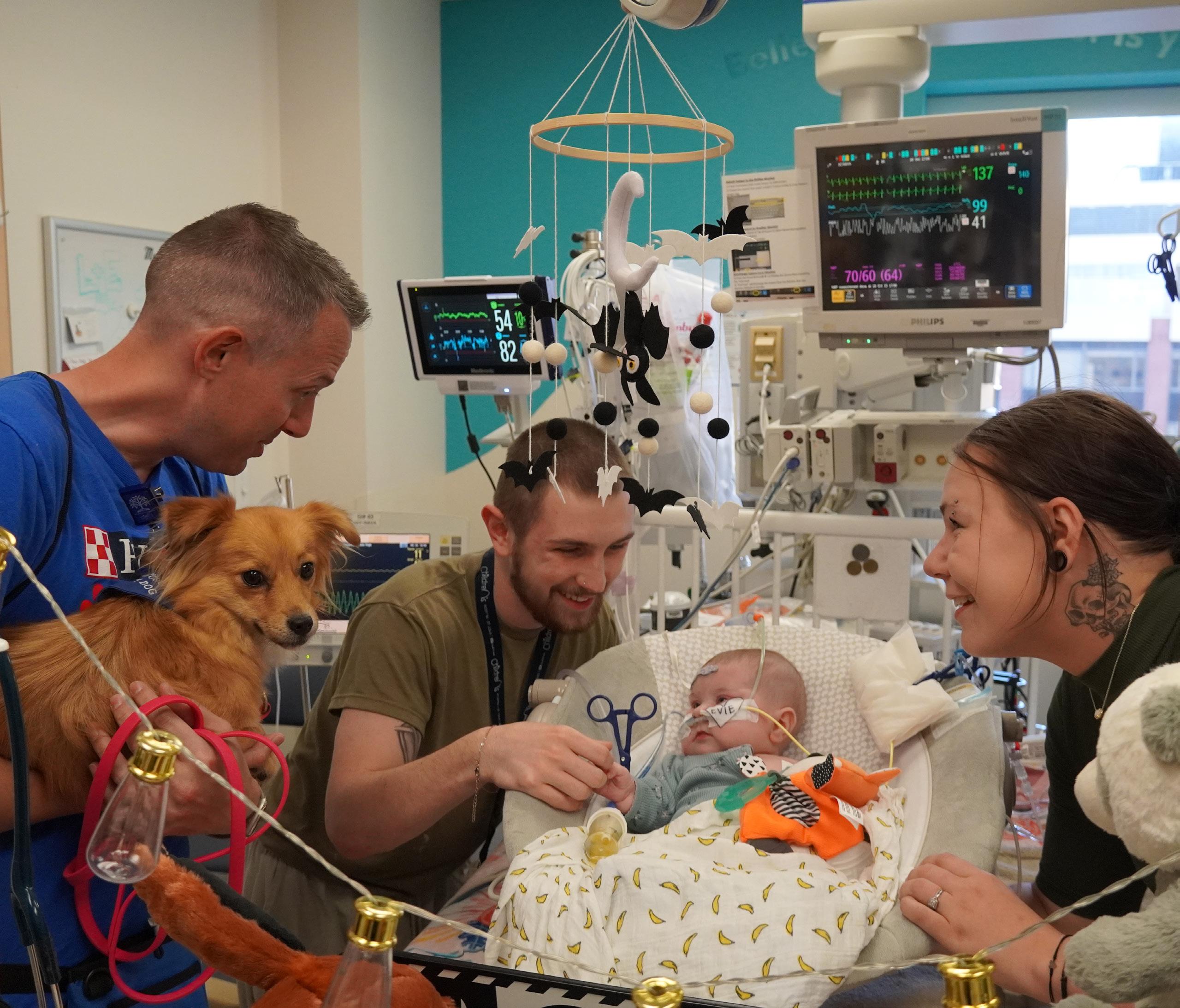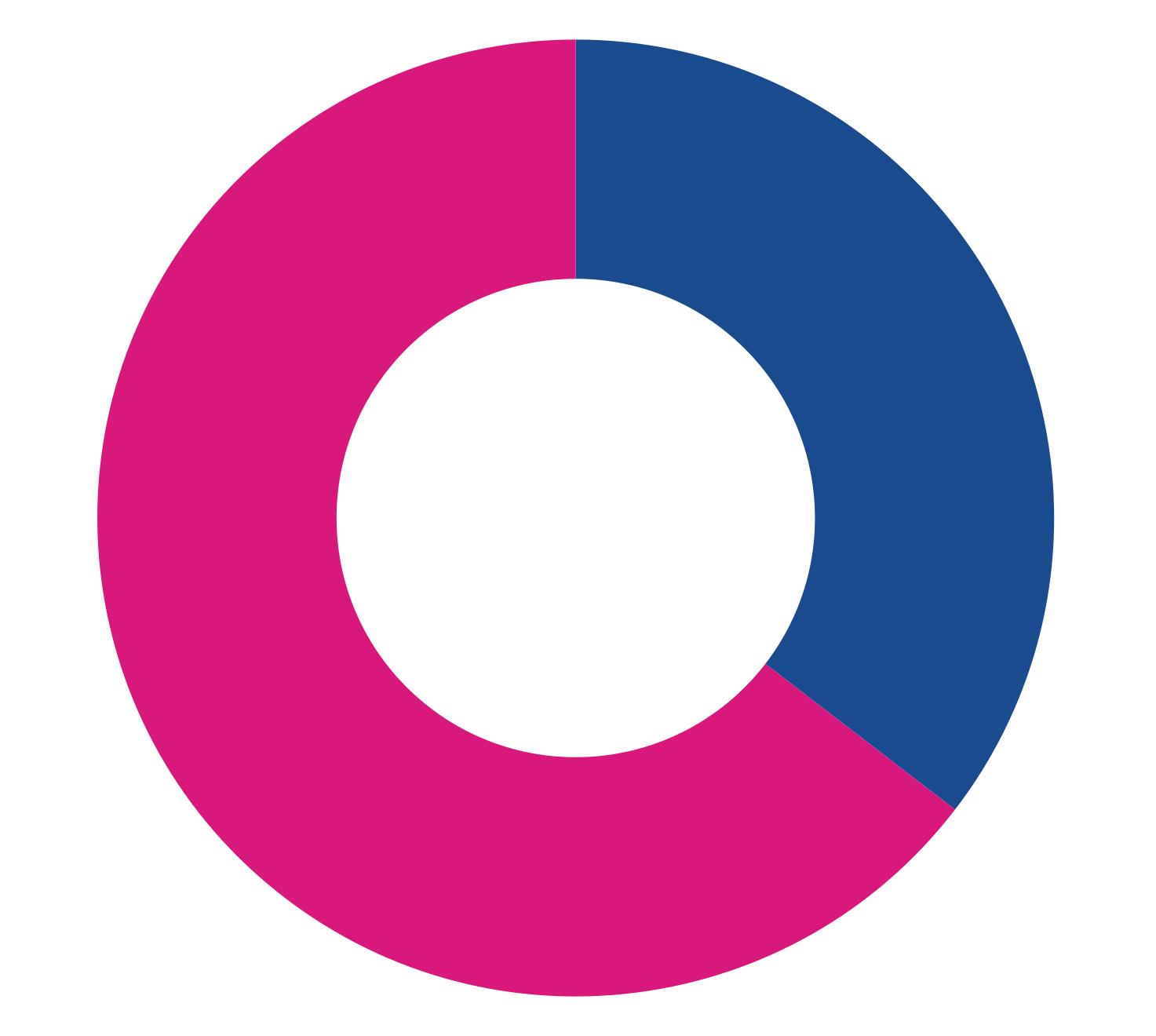
2023 PET THERAPY
Impact Report
We do what’s right for kids.



2023 PET THERAPY
We do what’s right for kids.

In 2023, St. Louis Children’s has elevated the knowledge and recognition of pet therapy services across the main hospital and our off-campus locations.
We continue to see evidence of increased clarity for families and staff supporting patients desiring pet therapy from their own pet, a Purina Paws for Hope therapy team or a facility dog. The support of a dedicated full-time position from Purina remains instrumental to bringing pets and patients together.
Last year, the Purina Family Pet Center team provided opportunities for 16 patients to visit with their furry friends, utilizing the room 21 times. Patients from Hematology-Oncology, The St. Louis Children’s and Washington University Heart Center, general medicine, surgery, transplant and the Pediatric Intensive Care Unit are among our patient populations who utilize the Center the most for visits with their dogs and cats from home.
The Purina Family Pet Center saw 17 dogs representing many different breeds — with the largest dog being a Great Dane and the smallest a Miniature Pinscher — and welcomed two cats. We have also added miniature horses to our animal therapy option thanks to the accommodations of the Center.
With the continued priority of bringing more visibility to the Purina Family Pet Center and providing equitable access to animals for both inpatient and outpatient children, we began hosting other animal-centered programs in the space. During seven separate events, a total of 934 patients were able to interact with two miniature horses and a red-tailed hawk.
We completed the aesthetic refresh in the space, including bookshelves to house the new Purina Family Pet Center library, upgraded accessible furniture and paint to make the space more home-like for families. The addition of broadcasting equipment in the Center is nearly complete, and will allow the space to host live, pet-themed, shows from the space to become a future reality.
In 2023, we started using the Purina Family Pet Center survey as a tool to collect quantitative and qualitative data supporting the case for the human-animal bond in 2023. Not all families are interested in participating, but of the nine surveys completed, the consistent response is an overarching narrative that pet therapy is beneficial to families and patients alike.
In 2023, Purina Paws for Hope marked another strong year of program operation. In 2022, the goal was to re-establish the presence of therapy dogs in the hospital and to start the recruitment of new teams, and in 2023 we continued to focus on growth.
The Purina Paws for Hope program ended the year with 53 dogs, including 12 new teams onboarded in 2023. With the acquisition of 52 dogs, a deck of playing cards was created featuring each dog in the program, with a beloved miniature horse as the Joker. After two years of exponential growth, we have reached a place where we can look at strategic growth over the next three years and

In 2023, we had incremental growth in the number of dogs, with exponential growth in the number of interactions and we attribute this success to these key factors:
• 2023 is the first year we had a large number of fully oriented and ready-to-go teams. Many of our teams in 2022 were onboarded towards the end of the year, so their impact can be fully seen in 2023.
• More Paws for Hope teams added in high traffic/volume areas such as the St. Louis Children’s Specialty Care Centers in West County and South County and the Newborn Intensive Care Unit.
Program Highlights
• 51 volunteers active in 2023
• 1,591 visits to a St. Louis Children’s Hospital facility
• 2,585 hours at a St. Louis Children’s Hospital facility
• 1 hour 36 minutes average visit time at a St. Louis Children’s Hospital facility
• Expanded to St. Louis Children’s Specialty Care – South County and the Newborn Intensive Care Unit
• Expanded the number of dogs that go to the Pediatric Behavioral Health Unit and Gender Independent Kids Club and advanced roles in the program
• Joined by two Purina team members from Purina and Duo Dogs pilot program
focus on adding a smaller number of teams with specific skill sets and availability. We are committed to our goals of expanding the number of pets to serve more patients and increasing access to pets in more locations.


*Program paused March 2020 due to COVID-19
**Program resumed June 2021

Children (any patient, sibling, family member under the age of 18) (36,051)
Adults (any family member or hospital staff member) (65,700)

Hospital (61,409)
St. Louis Children’s Specialty Care Center – West County (37,635)
Child Development Centers (2,706)

St. Louis Children’s Specialty Care Centers – West County and South County (455)
Lobbies/Hallways (395)
Neurology (280)
General Medicine 10th Floor (279)
Hematology-Oncology (210)
The Heart Center (161)
Staff Areas/Events (161)
General Medicine 11th Floor (157)
Pediatric Intensive Care Unit (154)
Pulmonary (135)
Emergency Department (101)
Center for Families (103)
Outpatient Clinics (92)
Pediatric Behavioral Health Unit (76)
Newborn Intensive Care Unit (54)
Child Development Centers (38)
Unit Playrooms (36)
Operating Waiting Room (33)





Thanks to Purina’s support, care for Duo Dog Casey and Duo Dog Opal is covered — including insurance, health expenses and grooming — which is essential in ensuring both dogs remain healthy and safe to support our patients.

In 2023, Casey celebrated his 6th birthday and he celebrated four years of working full-time as a member of Child Life Services in February 2024. Casey is utilized heavily to help patients cope with their hospitalizations, achieve their treatment goals and enhance the positive experiences patients and families have in the hospital.
This year Casey started spending more and more time in our Pediatric Intensive Care Unit (PICU), to support patients and families who either spent several months in the PICU or who were experiencing an end-of-life situation. Casey maintains a calming, supportive presence during these tragic and heartbreaking situations. Adding a Child Life specialist in the PICU to Casey’s core team enabled us to expand our utilization of Casey and provide more consistent care to families in the PICU. Casey will also serve in a new role supporting our Newborn Intensive Care Unit, where he will have a heavy focus on parent and sibling support and ensuring positive experiences for the whole family.
Casey is still used frequently in our Hematology-Oncology clinic and is requested by staff to support patients in The Heart Center, Ambulatory Procedure Center, Emergency Department and Neurorehabilitation Program.
In 2023, Casey participated in 1,330 patient interventions, including procedural support, end-of-life support, motivation during therapy sessions and difficult conversations.
In 2023, Opal celebrated her 6th birthday, and in June 2024 will celebrate three years of working full-time as a member of our Child Protection Program and Pediatric Behavioral Health Unit teams.
Her critical role in supporting a team of medical personnel with our Child Protection Program who specialize in

evaluating cases of suspected abuse or neglect continues to improve clinic show rates with her calming presence for patients, siblings and caregivers.
In the Pediatric Behavioral Health Unit (PBHU), staff support is an immense need because of the large multidisciplinary team needed to treat patients. Opal has been attending treatment team rounds on a more regular basis, supporting 12–15 staff members. The treatment team consists of psychiatrists, fellows, medical students, occupational therapists, social workers, music therapist, art therapist, recreational therapist, pharmacist and a charge nurse. When Opal comes to rounds, she is able to be off her leash in a room, wandering from person to person “checking in.”
Her body of work with patients is attending individual therapy sessions and being present in group therapy as patients work on self-discovery, self-esteem, leisure activities and social interactions. Opal has been very useful in de-escalating and distracting patients, and several patients have asked for 1:1 time with her throughout the day when feeling anxious. Patients are given surveys before and after treatment and her visits consistently result in a self-reported increase in mood and lessened anxiety with a common expression from patients that Opal made them feel happy even when they felt like they didn’t deserve it.
In 2023, 174 patients were offered to have Opal be a part of their clinical visit through our Child Protection Program. Opal participated in 128 patient interventions, which is a 73% show rate in the clinic. Her integration into the clinic continues to have a significant impact on the show rate. Prior to her arrival, the show rate was averaging 60%, comparable to the national average of a child protection program.
Opal participated in 1,221 patient interventions and supported 2,512 staff members in the pediatric behavioral health unit.